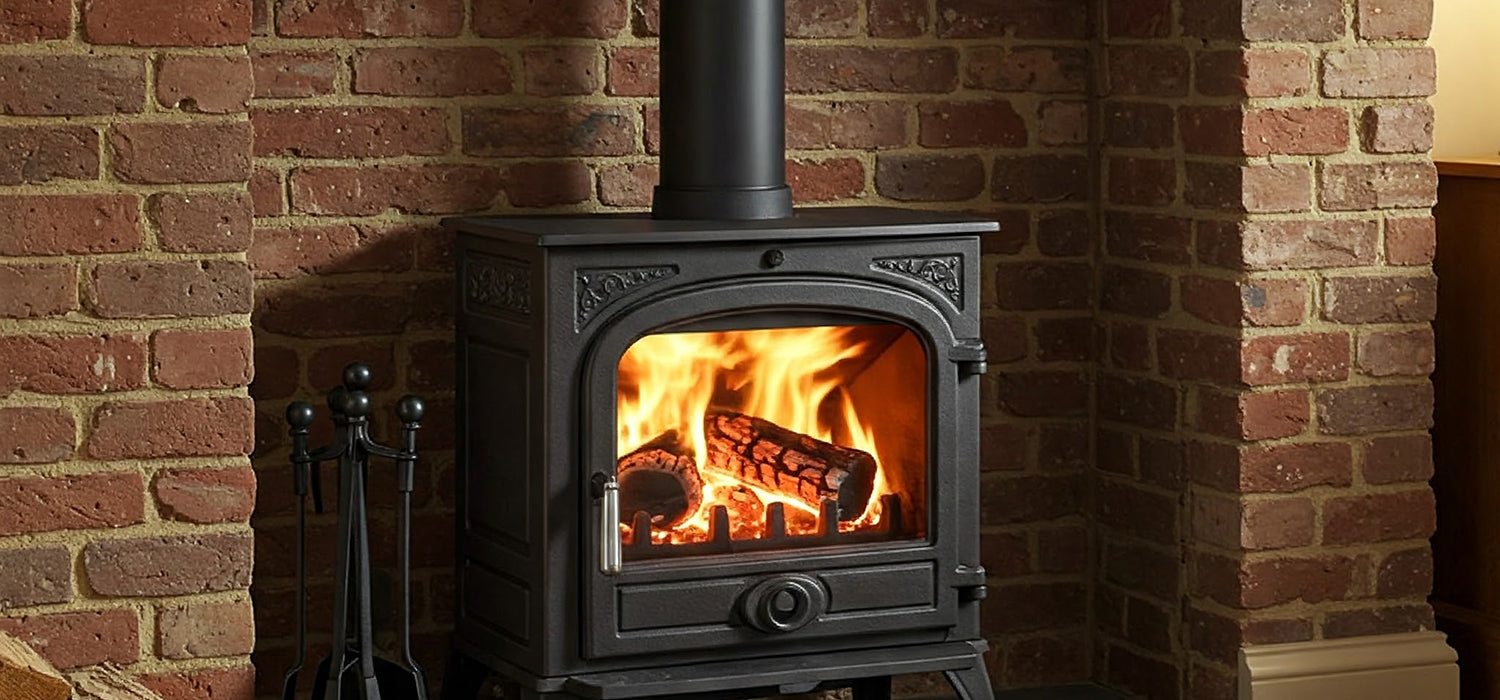
Why Your Log Burner Is Burning Too Fast (And How to Fix It)
Ever feel like your Log Burner is eating logs faster than you can stack them? The short answer: too much airflow, poor-quality wood, or setup issues. But don’t worry—stick around to discover how a few simple tweaks can slow things down and keep your fire glowing longer.
Why Your Log Burner is Burning Through Wood So Quickly
If your log pile is shrinking faster than your patience on a cold night, chances are your stove isn’t working as it should.
The good news? The reasons behind a fast-burning log burner are usually straightforward. In most cases, it comes down to one of three culprits: too much air, the wrong wood, or simply using logs that are too small to last.
Let’s look at why your fire might be vanishing before you’ve had the chance to settle down with a cuppa.
The Main Culprit: Excessive Airflow
Air is essential for fire, but too much of it and your cosy glow turns into a roaring blaze. Think of it like leaving your car accelerator stuck down—you’ll burn through fuel in no time.
Log burners with wide-open vents, leaky doors, or poorly sealed gaskets behave in the same way. The flames go wild, the wood disappears, and you’re left staring at a bed of ash far sooner than expected.
How to Control the Air Vents
Your vents aren’t meant to stay in one position all night. At first, yes—open them wide to get things started. But once the logs are burning properly, close them down gradually.
Aim for a steady, glowing fire rather than crackling flames licking the glass. It’s like adjusting the heating dial in your car—you want comfort, not a hot blast that fizzles out.
Checking for Gaps and Leaks
Even the smallest gap can act like a secret oxygen boost for your fire. Over time, the door seals on your burner can wear down. Gaskets flatten, small cracks appear, and suddenly your “controlled” fire is anything but.
A simple fix is to check your seals regularly. If the door doesn’t shut tightly or you see smoke escaping into the room, it’s time for new gaskets. Once sealed properly, you’ll notice your logs lasting much longer.
Are You Using the Right Fuel?
Your choice of wood plays a huge role in how quickly your burner gets through the pile. Not all logs are created equal—and some disappear before you’ve even had the chance to top up your drink.
The Problem with Very Dry Wood
Yes, you need dry wood. But wood that’s too dry can be just as much of a problem. Kiln-dried logs with ultra-low moisture often burn fast and hot, giving you plenty of flame but not much staying power.
The sweet spot is around 15–20% moisture content. This gives you a steady, reliable burn without the quick “flash-in-the-pan” effect of overly dry logs.
Is Your Wood Too Small?
If your logs look more like chunky kindling, don’t be surprised if they vanish quickly. Smaller pieces catch fire in an instant but don’t last.
Once your fire is established, switch to larger, denser logs. These will give you the long, slow heat you’re after—perfect for winter evenings when you’d rather not be constantly topping up the stove.
How to Slow Down the Burn for Greater Efficiency
So how do you stretch out your logs and keep your home warm without constant refuelling? The answer lies in mastering a few simple techniques. With the right approach, you can cut your wood use dramatically while enjoying steady heat all night long.
Master the Art of Air Control
The single biggest factor in burn rate is how you manage airflow. Too much oxygen, and your logs burn away quickly. Too little, and the fire smoulders without giving much heat.
The trick is balance. Start with open vents to get the flames going, then gradually reduce them until you find the “sweet spot”—steady flames, glowing embers, and no frantic crackling. It takes a bit of practice, but once you’ve mastered it, your log pile will thank you.
The Best Wood for a Long Burn
When it comes to burn time, hardwoods are the champions. Oak, ash, and beech burn slowly and steadily, giving you hours of warmth. They’re denser, which means they take longer to catch—but once they do, they deliver real staying power.
Softwoods, on the other hand, burn quickly and are best kept for kindling or a quick boost. Use them wisely, and your hardwood supply will go much further.
Top Tips for an Overnight Burn
There’s nothing more frustrating than waking up to a cold stove. Luckily, with the right approach, you can keep a bed of glowing embers ready for the morning.
Here’s how to do it:
-
Use large, dense hardwood logs.
-
Bank the fire by stacking logs close together—this slows airflow.
-
Turn the vents down to the lowest safe level once the fire is established.
-
Close the stove door firmly to stop unwanted oxygen sneaking in.
Do this, and you’ll often wake up to enough embers to relight your fire without starting from scratch.
Conclusion
If your log burner feels like it’s racing through wood, don’t panic—it’s almost always down to airflow, fuel choice, or log size. The fixes are straightforward once you know where to look.
By learning to control your vents, checking for leaks, and choosing the right wood, you can transform your stove into the efficient, long-burning heater it’s meant to be.
The trick is paying attention to the small details. Every adjustment you make—whether it’s swapping to hardwood, resealing a door, or banking your logs properly—adds up to a warmer home and a slower-burning fire.
With a little practice, you’ll soon spend less time feeding the flames and more time enjoying them. After all, that’s what a log burner is really about: comfort, warmth, and the simple pleasure of a fire that lasts.
Other content we think you'll love
- What Are the New Log Burner Rules in the UK?
- Why Your Log Burner is Smoking: Causes, Fixes, and Safety Tips
- Why Does My Log Burner Smell?
- Why Does My Log Burner Keep Smoking? Common Causes & Fixes
- Why Your Log Burner Won’t Stay Lit (and How to Fix It)
- Why Is My Log Burner Smoking? Causes, Fixes & Prevention
- Can You Safely Put a TV Above a Log Burner?
- Keeping Your Baby Safe Around Log Burners
- Can You Safely Install a Log Burner Near Glass?
- Why Your Fireplace Smells Like Burning Plastic (and What to Do About It)
- Log Burner Carbon Monoxide: Stay Safe from the Silent Killer
- Log Burner Law UK: The Complete Guide for Homeowners

